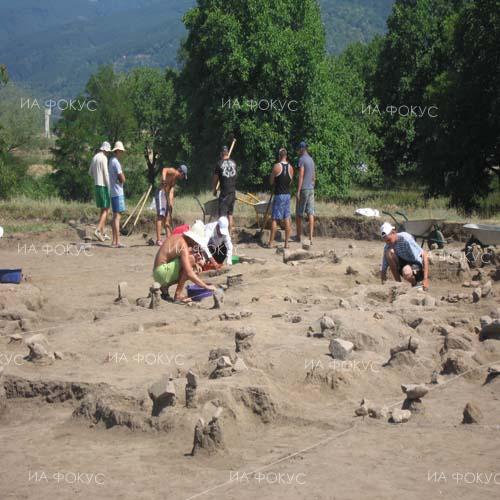Source -http://www.focus-fen.net/opinion/2014/06/18/3659/bulgarian-archaeologist-doychin-grozdanov-over-200-coins-were-found-during-archaeological-diggings-near-bulgarias-dupnitsa.html?

Focus Information Agency; Bulgarian archaeologist Doychin Grozdanov: Over 200 coins were found during archaeological diggings near Bulgaria’s Dupnitsa
Archaeologist Doychin Grozdanov in an interview for Radio Focus – Kyustendil
FOCUS: Mr Grozdanov, tell us more about the archaeological project you are currently in charge of?
Doychin Grozdanov: There are fourteen objects that are being investigated along Stuma motorway. Our target is registered under number three and is located near the Bulgarian town Dupnitsa, in the local area Cheresharnika. The terrain has been a target of exploration since 31st March 2014. A group of the Regional History Museum – Kyustendil, is also participating in the research whose co-leader is Ass. Prof Metodi Daskalov. The team includes experts from the museum of the Bulgarian town Pernik, Sofia University and the Bulgarian Academy of Sciences.
FOCUS: What is the acreage of the area in question?
Doychin Grozdanov: It is 8,717 square metres.
FOCUS: What have you found so far?
Doychin Grozdanov: So far, we have found two buildings and ruins of other premises which were probably part of an unfortified village. It had existed during Roman times or the early Byzantine times. According to our preliminary data the chronological range is between mid 3rd and the beginning of the 6th century. The village was destroyed during Avaro-Slavic conquest on the bank of Struma River in the middle of the 6th century. An evidence for this we get by the Avar arrows which are exactly of that period. Interestingly, this is the second village in South-West Bulgaria with the same features. The first one was explored by our colleague Rumen Spasov and it became part of Stuma motorway, but archaeology had then reached the mid 5th century. The constructions of the building that we found were in very good condition. Two of the walls were made of river stones knitted with mortar and the rest of the walls were made of surface stones but this time cemented with mud.
FOCUS: Did you find any other cultural monuments, apart from the buildings?
Doychin Grozdanov: Yes, we did. We found bronze coins, the oldest of which was of Caracalla. This is according to the preliminary data because the artefacts have not gone through the restoration atelier yet. The newest one, on the other hand, are from Justinian and Justin, dating back to around mid-VI century. There are bronze fibulas, applications of belt trimming.
The numismatic material is comprised of more than 200 coins.
We also have a collective finding of 43 bronze coins, which were probably hidden during the raids of the Huns, but this is yet to be ascertained.
We also found pithoi, known as dolia. These are big vessels, of the type of the earthen jars, used to store grains.
Apart from the two buildings, there are also remains of warehouses, which are dug into the ground. The material we have does not exclude the presence of barbarian elements in terms of settlement’s population, which is proved by the some of the types of pithoi.
FOCUS: Is there more work to be done?
Doychin Grozdanov: The project is with a deadline of three calendar months. At this stage, we have work for about a month. I hope that after the excavations are finalised we will manage to organise an exhibition and show the results of this study.
FOCUS: Are you going to finalise the project on time, so as to launch the construction of a motorway at that terrain?
Doychin Grozdanov: Yes, we will. There is no problem, so far everything is going on according to schedule.